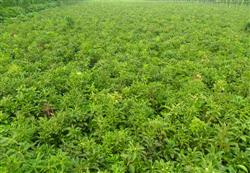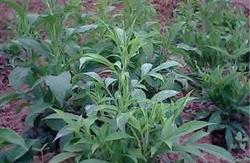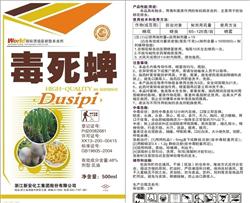Five points should be grasped in the cultivation of Atractylodes macrocephala Koidz

White atractylodes rhizome, also known as Yu Shu, Dong Shu, Zhe Shu, etc., is a compositae plant. Rhizome can be used as medicine, there are spleen, dampness, abortion and other effects, is a valuable Chinese herbal medicine. Planting atractylodes macrocephala in rural areas is a way to become rich with less investment, short production cycle, smooth market and high economic benefit. 1. Land selection and preparation. Baishu likes cool climate, afraid of high temperature and high humidity environment, not strict with soil requirements, but with good drainage, deep soil slightly acid, alkali and light clay is good. Plain areas should be selected loose soil, medium fertility plots. The soil is too fertile, the seedlings grow too prosperous, easy to bolt and bloom in the same year, affecting the medicinal quality. In mountainous areas, you can choose thick soil and land with a certain slope for planting. The previous crop is best gramineous crops, not tobacco, peanut, rape and other crop stubble, otherwise easy to occur diseases. Nursery land is generally 4000-5000 kg farm manure per mu, or 75-100 kg cake fertilizer, transplanting land is 2500-4000 kg farm manure per mu. 2. Seedling transplanting. Select large-leaf dwarf varieties. In North China, seedlings are generally sown in the middle and late April. Before seeding, the seedling field shall be made into flat bed, trenching and drilling shall be carried out according to row spacing of 16-17 cm and depth of 3-4 cm, and the seeding amount per mu shall be 4-5 kg. Always keep moist after sowing. Seedlings unearthed should be pulled out in time, between dense seedlings and disease, weak seedlings, seedlings 3-5 cm high according to the row, plant spacing of 7-10 cm seedlings. Seedlings topdressing 1-2 times, generally 500 kg of manure per mu is appropriate, too much seedling growth, branches and leaves too tender, disease resistance weakened. From mid-late October to early November, the seedlings are dug for storage before freezing. Choose a shady place to dig a deep, wide pit about 1 m, put seedlings into the pit about 0.5 m deep, covered with dry soil 4-6 cm. Cloudy day temperature drops, can thicken gradually cover soil, add the thickness of soil to do not frostbite seedlings is appropriate. If the weather is warmer in winter, there is no need to cover the soil. The seedlings are transplanted in early April of the following year, generally with row spacing of 50-60 cm and plant spacing of 7-10 cm, single row or double row planting. The optimum transplanting density was 12 - 15 thousand plants per mu. Generally, about 60 kilograms of seedlings are used per mu. 3. Field management. After sowing or transplanting white atractylodes rhizome, weeding and loosening should be done frequently, so that the soil surface is loose and free of weeds. Pay attention to prevent waterlogging in rainy season. Fertilization should master the principle of "applying sufficient base fertilizer, early seedling fertilizer and heavy bud fertilizer." After seedlings basically come out neat or transplant slow seedlings, apply fertilizer for the first time, and the amount of fertilizer should not be too much. The second fertilization of transplanted seedlings is generally 5-7 days after flowering (before flowering for those who keep seeds), and 75-100 kg cake fertilizer, or 1000-1500 kg human and animal feces and urine, 25-30 kg calcium superphosphate, or 25 kg diammonium phosphate are applied per mu. Before inflorescence opens, bud should be picked in time to promote nutrient supply. 4. Pest control. There are many diseases of atractylodes macrocephala, such as rust, iron leaf disease, root rot, blight, etc. Iron leaf disease can be sprayed at the initial stage of the disease with a mixture of 0.3 degrees of stone sulfur, once every 8-10 days, and continuously sprayed for 2-3 times; root rot, blight, etc. can be irrigated with 50% carbendazim 600 times solution or 50% thiophanate-methyl 1000 times solution at the initial stage of the disease. To prevent and control the insect pest of atractylodes macrocephala, 50% dichlorvos 800 times solution or 40% dimethoate 1500-2000 times solution can be sprayed once every 7-10 days before the adult of atractylodes macrocephala lays eggs, and continuously sprayed for 2-3 times. 5. Harvest and processing. White atractylodes rhizome usually begins to harvest when the stem turns from green to yellow from late October to early November of the planting year. The method is: choose sunny day to dig, dry or dry. Sunburn 15-20 days until dry, drying heat should not be too strong, temperature is not hot. After being baked for 4-6 hours, turning it up and down once to make it evenly heated, and at the same time, the fine roots naturally fall off. When it is baked to 80% dry, it is taken out and accumulated for 5-6 days to make the internal moisture leak out and the skin turn soft, and then it is dried again. Do not use oil fuel such as pine and cypress when baking, so as not to blacken white atractylodes rhizome and affect quality. It is generally believed that white atractylodes rhizome with a large, hollow, cross-section for the good.
- Prev

Pollution-free cultivation techniques of Atractylodes macrocephala Koidz
Atractylodes macrocephala Koidz is wild distributed in Zhejiang, Jiangxi, Hunan, Hubei and Shaanxi, and can be planted in these provinces and North China. The porous, loose and fertile sandy loam is beneficial to the root growth of Atractylodes macrocephala Koidz, which is suitable for planting Atractylodes macrocephala Koidz.
- Next

What kind of weather is not suitable for pesticide application
What does the letter on the pesticide label mean? Please introduce (1) pH: indicates pH, neutral when PH is equal to 7, alkaline when greater than 7, the greater the number, the stronger the basicity. When it is less than 7, it is acidic, and the smaller the number is, the stronger the acidity is. (2) PPm: million parts concentration. That is, 1 million parts of liquid medicine, the number of pesticide parts of powder;
Related
- Fuxing push coffee new agricultural production and marketing class: lack of small-scale processing plants
- Jujube rice field leisure farm deep ploughing Yilan for five years to create a space for organic food and play
- Nongyu Farm-A trial of organic papaya for brave women with advanced technology
- Four points for attention in the prevention and control of diseases and insect pests of edible fungi
- How to add nutrient solution to Edible Fungi
- Is there any good way to control edible fungus mites?
- Open Inoculation Technology of Edible Fungi
- Is there any clever way to use fertilizer for edible fungus in winter?
- What agents are used to kill the pathogens of edible fungi in the mushroom shed?
- Rapid drying of Edible Fungi

